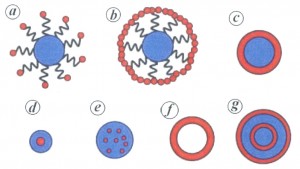Project title: “INCORPORATED SURFACE PLASMONS INTO CORE-SHELL FLUORESCENT NANOPARTICLES USING MICROEMULSION ASSISTED PHOTOREDUCTION TECHNIQUE”
Acronym: NANOLIGHT
Project type: European project
The purpose of this project is to develop incorporated surface plasmons into core-shell fluorescent NPs using microemulsion assisted photoreduction technique, approaching two routes: a) hollow NPs encapsulating chromophores: chromophores are encapsulated in hollow Au NPs to form J aggregates; b) NPs coated with a silica layer to which chromophores are covalently bonded: Au NPs represent the core and the core-shell is represented by chromophores bonded to silica. Metallic NPs can strongly influence the optical response of organic and inorganic materials. The optical properties (both enhancement and quenching) of a dye molecule located near metal NPs are affected by the local electrodynamic environment. The distance between the chromophores molecule and metal NPs surface play an important role in influencing the fluorescence intensity. The overlap of the absorption or emission bands of chromophores with the SPR band of metal is an important factor that affects the intensity of fluorescence – when emission band of the chromophores overlap the SPR band of Au NPs, the fluorescence emission may be enhanced.
Nanoparticles such as “core-shell”: (a) – change by anchoring nanoparticle core particles as a coating; (b) – shell nanoparticles anchored on the surface of the core to form a complete shell; (c) – covering the nanoparticle core with a thin coating; (d) – the nanoparticle encapsulation within a dielectric material; (e) – the incorporation of a number of nanoparticles inside a single dielectric core; (f) – Quantum bubbles; (g) – nanoparticles with multiple coatings.
